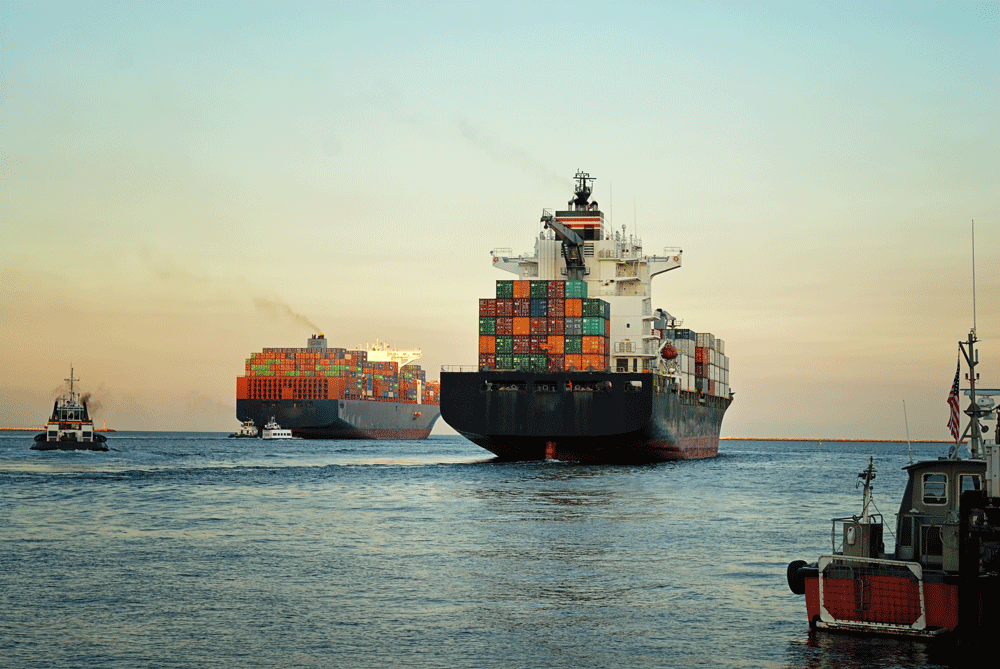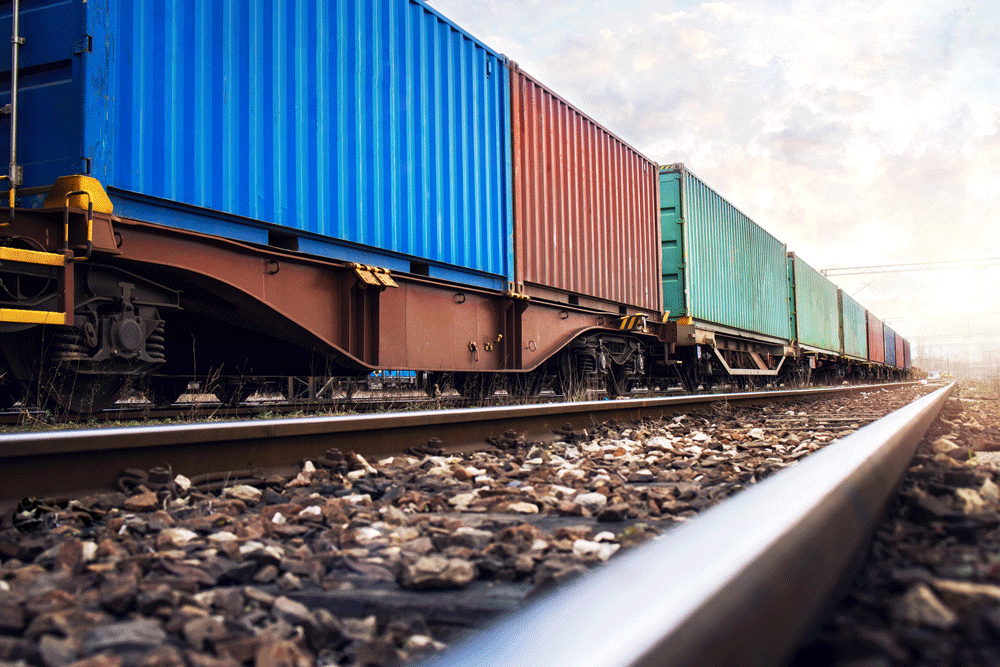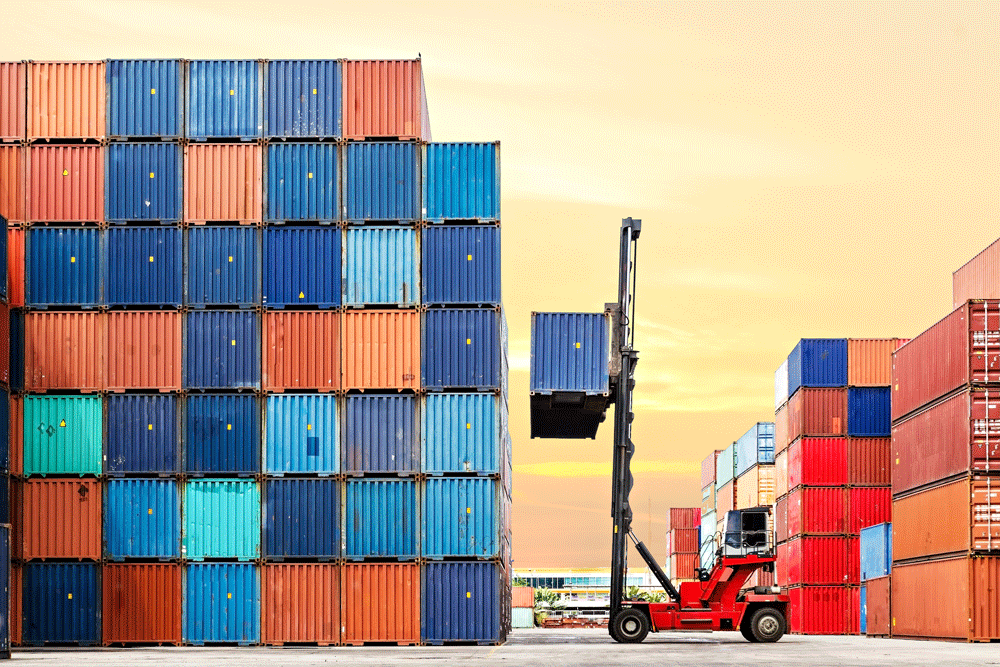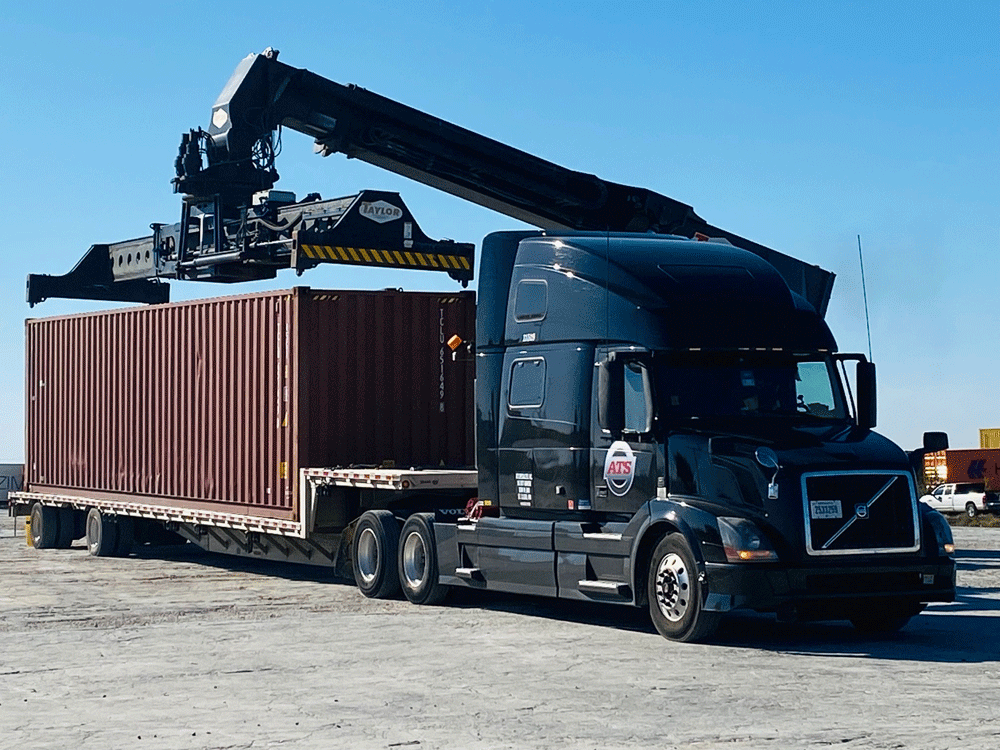
Logjam. Bottleneck. Clog. Impasse. Gridlock.
Whatever word you want to use, we’re seeing it happen in the international shipping industry.
Global shipping equipment shortages are causing tremendous problems in ports all over the world — particularly in the U.S. ports of Los Angeles/Long Beach and Newark/New York.
After being in the global shipping industry for the past three decades, we can safely say this “perfect storm” of problems is unlike anything we’ve seen before.
So what can you do about it? You still need to receive your products to deliver to your customers within a reasonable amount of time — especially with the holiday season fast approaching.
We’ll break down what we’re seeing in shipping ports, what you can expect going forward and what you can do to overcome the challenges you’re set to face for some time.
What’s Happening With Port Congestion?

Plain and simple, U.S. ports are overly congested. The LA/Long Beach ports are getting the most attention, but we’re seeing virtually the same problem in ports along the west coast, the Gulf of Mexico and the east coast — particularly New York area ports.
While it’s not to the same level, we’re starting to see congestion in Charleston, South Carolina and Savannah, Georgia (picture 12 vessels waiting to get into the port versus 60 in LA).
Why those ports? LA and New York are the two most popular U.S. ports for inbound container cargo from the far east. So as production continues to pick up following the shutdowns during the early stages of the pandemic, it’s creating a logjam as they arrive in the U.S.
In an attempt to keep container vessels moving, it was decided to keep port operations working and terminal gates open 24/7. While that’s a step in the right direction to attempt to ease congestion, don’t expect it to be the final solution.
What Can I Expect With Port Gridlock Going Forward?
Not to keep dwelling on it, but there’s a labor shortage in virtually every industry — including the transportation industry.

Operating 24/7 will certainly spread out the number of trains and trucks coming in and out of the ports at the same time, but to do this effectively you need sufficient port labor as well. You also need trucks and drivers to transport the cargo to its final destination.
Both of those are hard to find right now.
Something else that’s hard to find is equipment to move your cargo in. So moving your cargo the way you were used to two years ago may not work today.
Ocean carriers are trying hard to keep their containers close to the ports so they have them when they need them. They don’t have time to wait for them to get back from a trip hundreds of miles inland.
That means they’re typically only quoting from to/from the port or one rail ramp to the next rail ramp — which is a drastic change from what it was before the pandemic. So it’s up to you to figure out how to get it to and from those ports and rail ramps and keeping it in the container it traveled over the ocean in probably won’t be a viable option.
How to Overcome the Supply Chain Bottlenecks
If there’s one thing we do know in this international shipping world of unknowns, it’s that this congestion problem doesn’t appear to be going anywhere anytime soon.
So it’s up to us as transportation providers and you as shippers to get creative in how we get your cargo delivered anywhere close to on time. Either that or keep telling your customers you don’t know when their cargo will arrive.
We know which options we’d prefer…
Here are some things you can do to overcome the challenges:
- Preplan
- Be Open to Other Port Locations
- Be Flexible to Other Modes of Transportation
- Be Aware of Other Factors With Your Shipment
- Be Flexible With Schedules
1. Preplan
This should be the case under normal circumstances — but it’s especially true right now. The more you plan ahead, the better off you’ll be in the end.
For example, make sure you have your international shipping documents in place before the vessel arrives at the port of destination. That way, you can do an “express release” — or a process that allows you to clear customs quickly. In that case, your cargo will probably be released before it’s ever in the port.

Before your cargo is discharged, make a pre-appointment with the port so you have somewhere to put your cargo. That way, you’re not scrambling to find space in an already congested port. Essentially, the pre-appointment will ensure your container isn’t buried in a stack somewhere when you’re ready to pick it up.
If the port you’re using offers pre-appointments, there’s also no penalty for canceling your appointment. So it’s best to get it on the books — even if you’re not 100 percent sure you’ll need it.
This isn’t a perfect solution — especially considering the congestion we’re seeing — but it’s a step in the right direction the ensure your cargo gets out of the port when you want it.
2. Be Open to Other Port Locations
We all know there’s more than one way to get from point A to point B. Sure, some are faster than others, but you still have options.
But if taking the faster route means you’ll be sitting in traffic or hit that big road construction project, you’re probably going to go a different way, right?
The same goes for choosing a port. Maybe you’re delivering to Fresno, California and want to have a shorter portage, so you’d typically discharge in LA. But if you could go to Seattle instead of LA right now, wouldn’t you? It might mean a longer inland transit, but the risk of your cargo sitting on a vessel outside the port is much lower.
3. Be Flexible to Other Modes of Transportation
While there are equipment shortages across the international shipping spectrum, the biggest headache comes with shipping containers and chassis availability.
So “think outside the box” (sorry for the pun) and consider using roll/on-roll/off options, shipping using a mafi trailer or breakbulk shipping.
Maybe containerized shipping is the only option for you. In that case, utilize a container for your ocean transport, but then use drayage to bring it to a container freight station (CFS) and cross-dock your cargo into a domestic trailer.
Or, if you’re really lucky and the ocean carrier lets you keep your cargo in the container until final delivery, use a hot shot trailer (if the container fits and it’s not too heavy) or a step-deck trailer.

4. Be Aware of Other Factors With Your Shipment
If you end up putting your cargo in a container and won’t be having it picked up right away, it’s important to know when your last “free day” is (you can get that information from your freight forwarder or the ocean carrier and terminal).
After your free day expires, you’ll be charged for every day you leave the container in the port. In fact, we just had a client face $40,000 in port detention charges by leaving their container in a port too long.
Another factor to consider relates to the 24/7 operation of the LA ports. Now that you can pick up any time of the day, it’s important to understand when you can deliver to the consignee. If the driver picks up from the port at 2 a.m., can they actually deliver it at 5 a.m. or will you have to pay them detention to wait for the receiver to open?
5. Be Flexible With Schedules
Besides the issues at the port, there are still hurdles to overcome once your cargo is in the U.S. There’s a shortage of both truck drivers and equipment to haul your freight. And the drivers that are working can only work so many hours each day due to federal regulations.
So while you might want your freight delivered at a certain time, it’s important to understand — and have your customers understand — that it’s not always possible to deliver as quickly as you’d like.
How to Overcome the Port Congestion Challenges
Ports across the world — especially in LA and New York — are congested. And while steps are being taken to reduce the congestion, it won’t be the final solution — which means you’ll have to adapt if you want your cargo delivered anywhere close to on time.
To overcome the challenges, it’s important to:
- Preplan
- Be Open to Other Port Locations
- Be Flexible to Other Modes of Transportation
- Be Aware of Other Factors With Your Shipments
- Be Flexible With Schedules
While nothing will get you back to what international shipping was like two years ago, if you can manage to do some — or all — of the things above, you’ll be in a much better place than some of your counterparts.
At this point, we hope your customers are aware of the challenges you face as a shipper. If not, it’s time to explain that you’re doing everything in your power to accommodate their needs.
These steps will help you get there.




